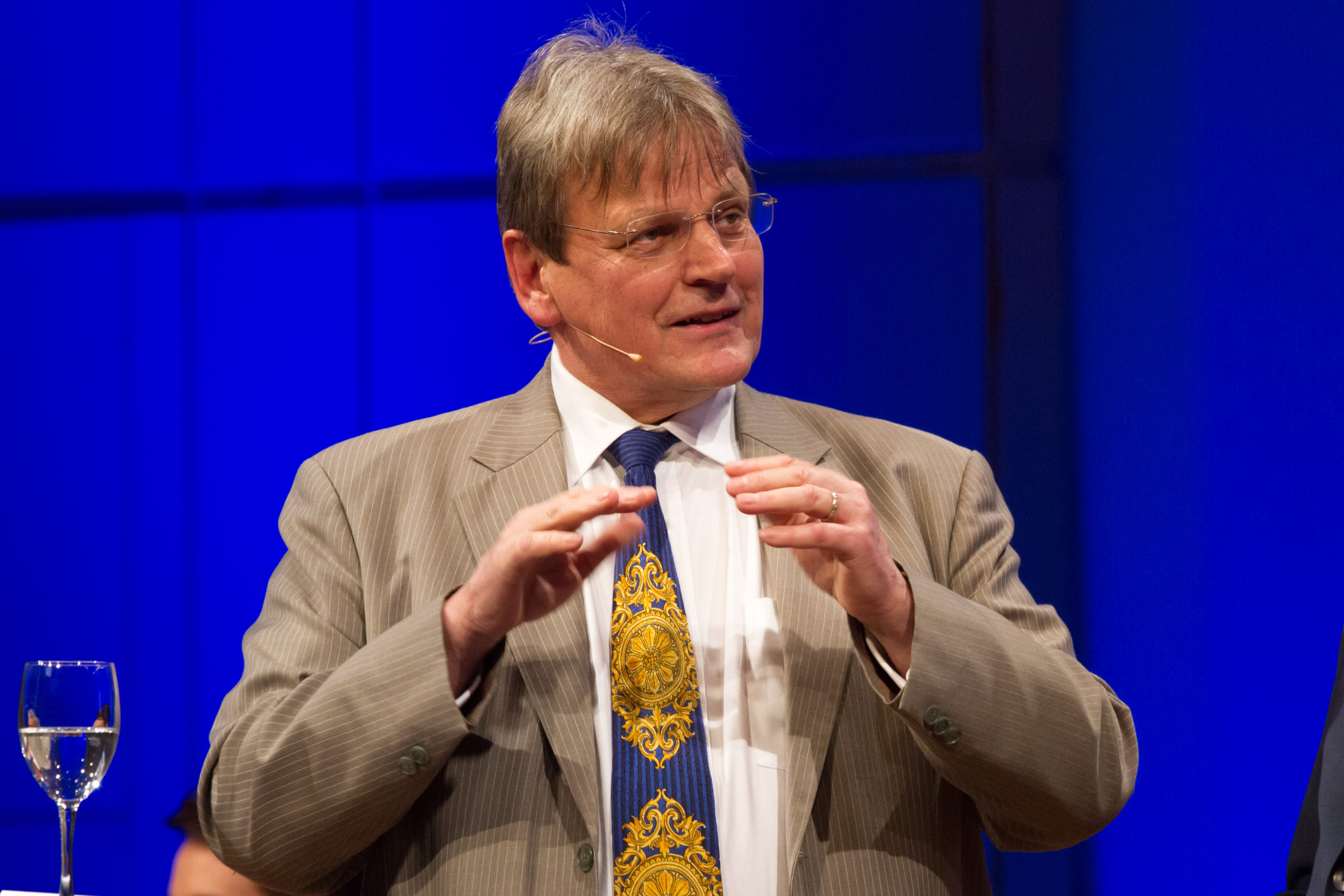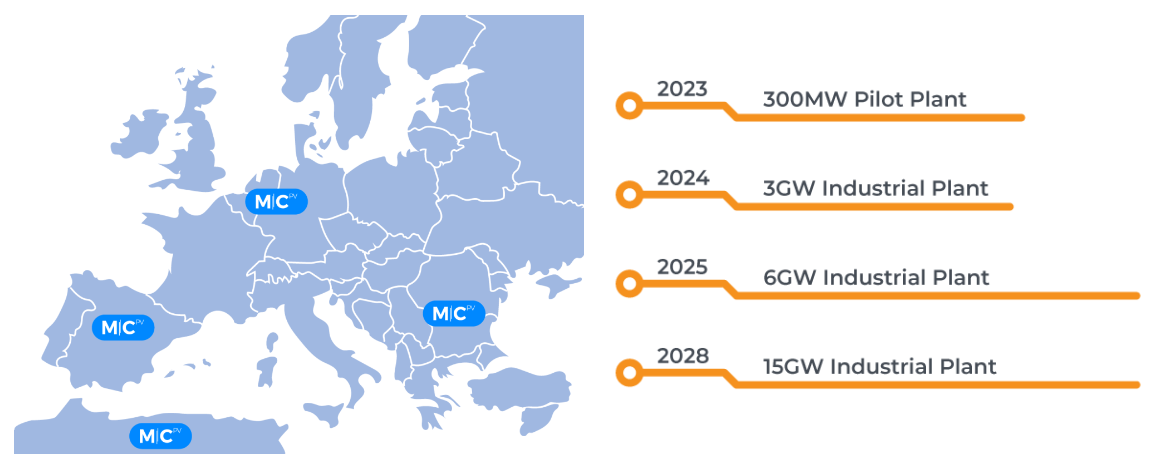
Prof. Eicke R. Weber hardly needs any introduction in this context. As co-chair of ESMC since the organization was formed in 2019, he often represents ESMC and is a well-known face for our members. When we e-meet him for an interview, he is sitting in a sunny Freiburg office, and the conversation drifts into the different turn that his career has taken and the differences between his two home markets, Europe and the United States.
BACKGROUND
While he is perhaps most known as the former director of Fraunhofer ISE, his background is in fact not in photovoltaics, but in semiconductor physics. In his field, he started studying defects created by plastic deformation of silicon, and later extended his studies on transition metals in silicon, and lattice defects in elemental and compound semiconductors. His academic career started at the University of Cologne, Germany, where he made his doctorate in 1976 and his habilitation in 1983. Thereafter, he spent around three decades lecturing at the faculty of the Department of Materials Science and Engineering of the University of California, Berkeley – since 1991 as a Professor of Materials Science. When asked about his career highlights, receiving the Alexander von Humboldt Senior Scientist Award (1994) and the award of Merit (Bundesverdienstkreuz am Bande) of the German President (2006) are high on the list. Connecting to the co-chairmanship of ESMC, he founded the German Scholars Organization (GSO) in 2003, an organization that supports and accompanies German scientists abroad on their career paths.
Before becoming director of Fraunhofer ISE, where he managed to grow the institute from a staff of 500 to 1200 during his 10-year mandate, he was involved in the start-up CaliSolar, focusing on developing PV cells out of lower-purity, upgraded metallurgical silicon. When asked about the challenge he had to face when becoming a director, he says “I had to quickly get used to the thought of running an institute of 500 people instead of a team of 20 students. But what many people don’t know about Fraunhofer ISE is that the directors get a lot of freedom, it is more similar to the role of a CEO as you’d think”. This is explained by the high share of funding coming from competitive projects, often in collaboration with industry partners.
“As long as your budget is balanced, you are free to make your own strategy decisions for the institute – I enjoyed that enormously”
TECHNOLOGY SHIFT AND GREEN TRANSFORMATION
Now, he is involved as a Chairholder, co-founder, and Senior Advisor of MCPV. The ESMC Member company is an industry start-up with concrete plans to establish next-generation heterojunction (HJT) PV manufacturing in Europe. In its first growth phase, MCPV aims to build a 300 MW cell and module manufacturing pilot line, initially creating over 200 new manufacturing, maintenance, engineering and logistics jobs. The plan is to then ramp up to GW-scale by 2024, aiming to be the fastest-growing EU integrated cell and module manufacturer serving the utility-scale and C&I market segments.
Picture: MCPV homepage, Growth
If you will, this is a good example of projects that fit under the umbrella of the PV-IPCEI initiative. HJT technology is part of the long-anticipated technology shift that could help re-establish the European PV manufacturing Industry. MCPV is active in the IPCEI framework, especially in the project group dedicated to bringing HJT technology to the gigawatt scale. Prof. Weber makes sure to emphasize the cross-industrial ties between the emerging green technologies in Europe, “Huge amounts of Green Hydrogen will be needed for the decarbonization of Europe’s steel and concrete industries. PV power generated in Southern Europe will be the lowest-cost electricity available on this continent”. Adding to that, the clear communication from the European Commission in the REPowerEU package highlights the need for accelerated deployment of renewables in light of the Ukraine invasion. Weber says, to establish more domestic PV manufacturing in Europe “is urgent, it makes perfect sense and is a hot topic right now”. MCPV is doing investor rounds right now and hopefully soon, there will be positive news, says Prof Weber.
THE EUROPEAN PV MARKET COMPARED TO THE AMERICAN
Having spent much time overseas, he is comfortable calling both markets his home markets. He reflects on the differences between Europe and the US and concludes that the investment environment is completely different. “In the U.S, they are innovation crazy”, he says. The willingness to invest in conventional technologies like crystalline silicon photovoltaics is very small, especially at the time when he was residing in California, ”To get money for bread and butter PV was almost impossible”. This can partly explain the industry landscape we see in the US today, says Prof. Weber, and gives MiaSolé and Solyndra as examples.
Name: Eicke R. Weber
Company: MCPV
Position: Chairholder, co-founder and Senior advisor
Location: Berlin, Germany
No. years in the industry: 33 years
It is easier to convince European investors that we are creating a billion-dollar industry in Europe based on these well-developed technologies, Eicke Weber claims. “Even if they are innovative, it is still crystalline silicon”, he continues, referring to the beforementioned technology shift into Heterojunction, TOPCon (Tunnel Oxipe Passited Contact), and IBC (Interdigitated Back Contact) technologies.
At the same time, there are untapped collaboration opportunities, Weber believes. “We have many similarities in our markets, if not else the need for increased market shares compared to Asia. There are also similarities in our cultures that can help collaboration …”, he says, in the context of organizational collaboration between ESMC and industry organizations overseas. Considering the Inflation Reduction Act, American manufacturers will get unmatched support for their products along the PV value chain. ESMC advocates for similarly strong support for European manufacturing to obtain a leveled playing field and to attract investors to the European market, and not lose them to the US.
All and all, co-chair Eicke R. Weber is optimistic. “With the PV-IPCEI gaining support, the EU Solar PV Industry Alliance launched, and the issue of domestic PV manufacturing becoming a topic of discussion in the European Commission, we [the European manufacturing industry] have a good chance to regain our position”.
Photo copyright: Robin Krahl

Amelia Oller Westerberg
Market Analyst
For more information:
westerberg@esmc.solar
